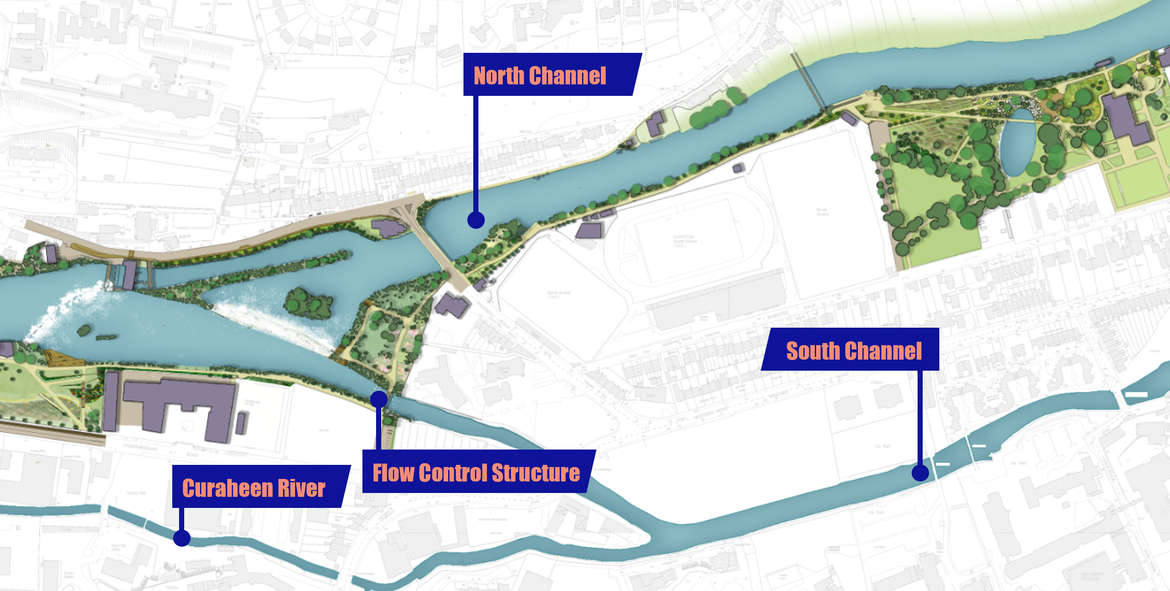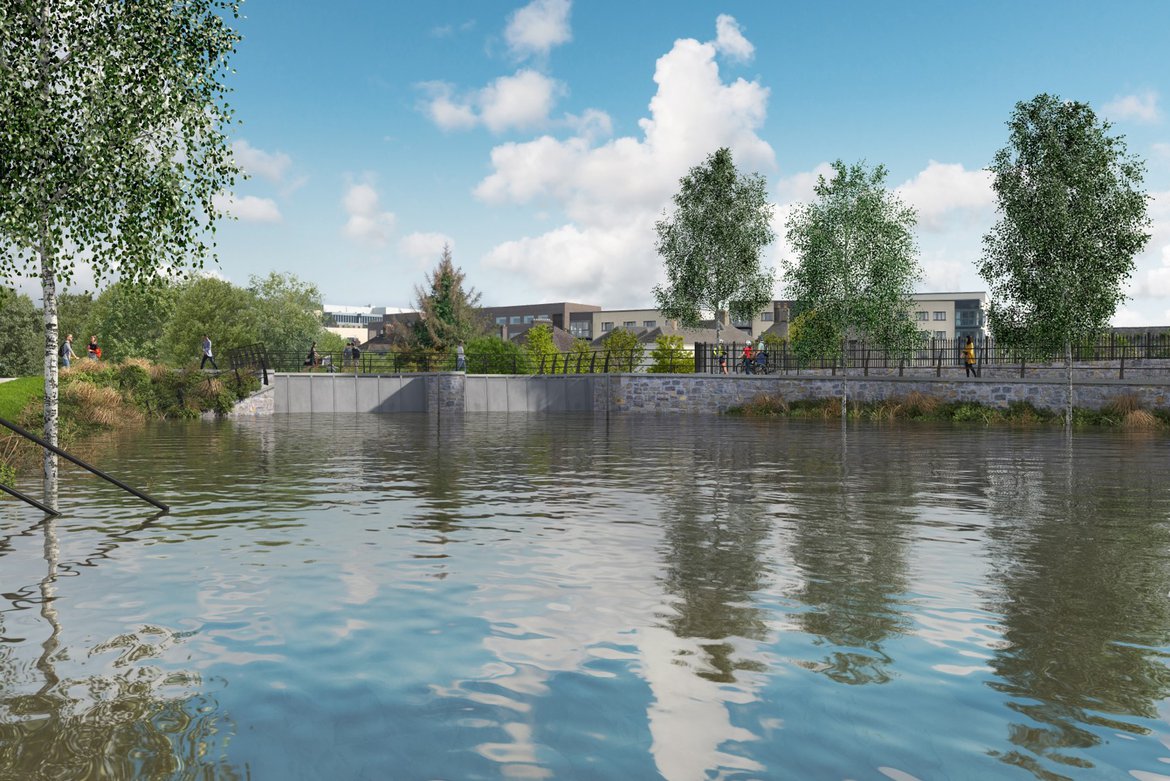Managing Flow between the North & South Channel Page
Flow in the south channel is as a result of flow from both the Lee catchment and the Curaheen and Glasheen catchments. The reach of the Curaheen channel immediately upstream of the south channel is very flat. The floodplain in the area is shared by both the Lee and the Curaheen. This means that large Lee flood events can spill into the Curaheen channel via this floodplain. The capacity of the South Channel is much smaller than the North Channel and is restricted by a number of low-lying bridges.
At present, during major flood events, a disproportionate proportion of the Lee flow is conveyed by the south channel, Curaheen and its floodplain. Because of its shallow gradient and low capacity, if the existing flow split were to be retained, several kilometres of extremely high defences (in excess of 2 metres high) would be required along significant reaches of both the lower Curaheen and the south channel. Such high defences are neither desirable nor sustainable.
Therefore, the Scheme proposes to better balance the proportion of flow taken by each channel depending on the respective river flows in the Lee, Curaheen and Glasheen, as well as considering the influence of the tide.
This is achieved through the incorporation of a flow control structure at the head of the south channel. Most of the time, this structure will remain open, and the regime will remain as it is at present. However, during extreme river floods and/or extreme tides, the flow control structure will be closed, allowing only a small environmental flow into the south channel from the Lee with the vast majority of the Lee flow being conveyed along the North Channel, with the south channel conveying the Curaheen flow and the environmental flow from the Lee.


